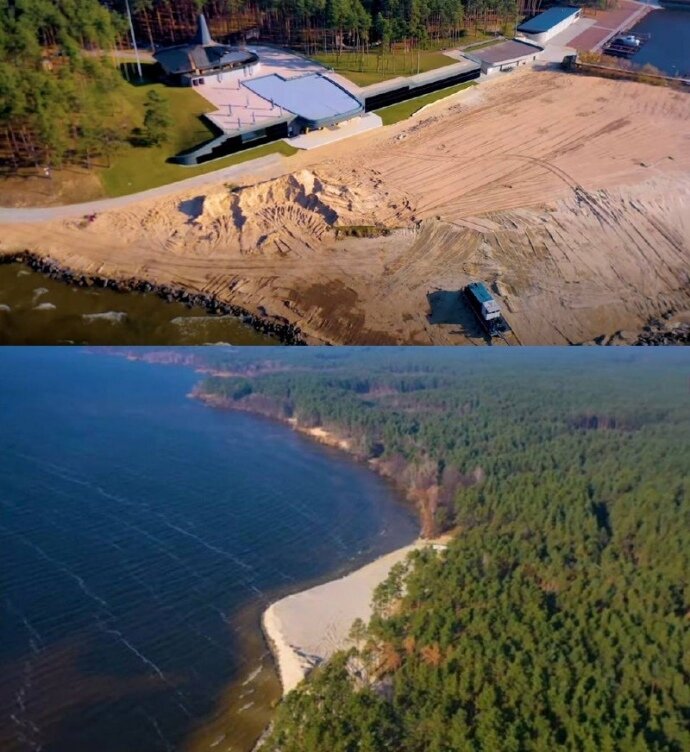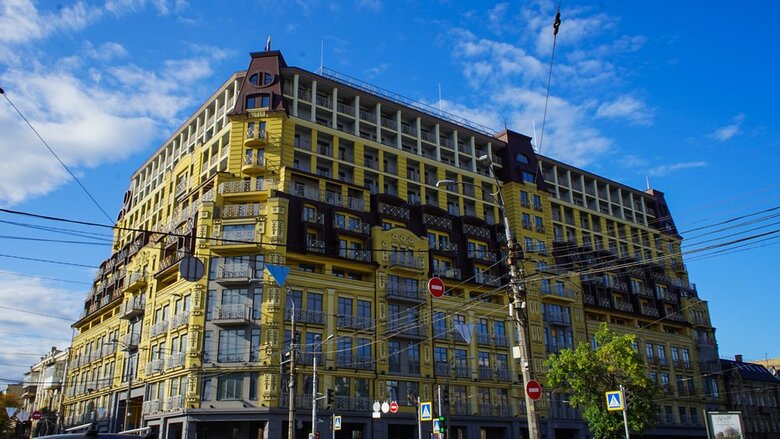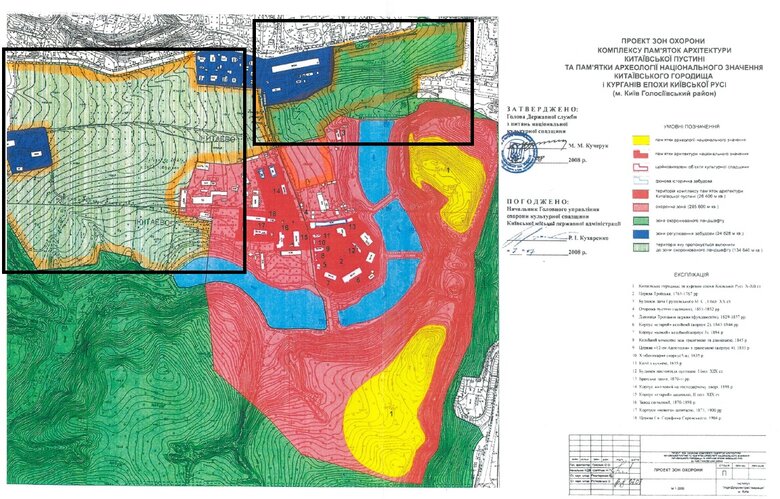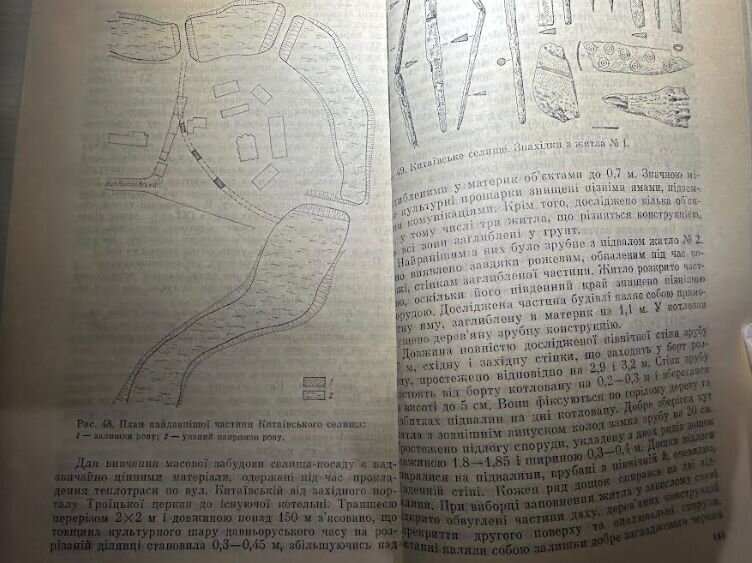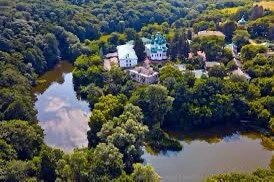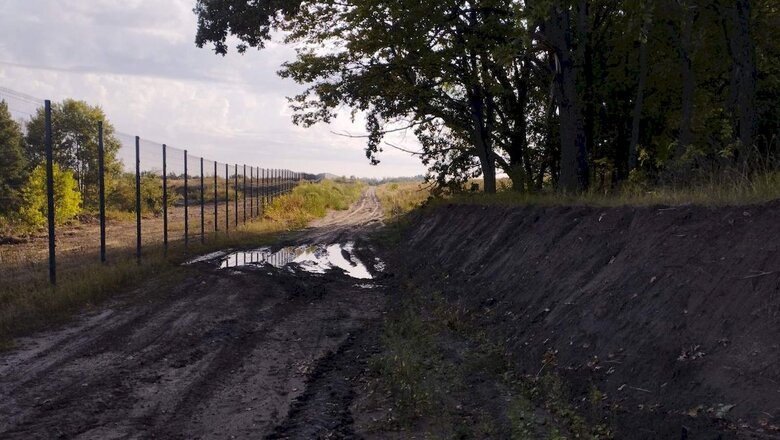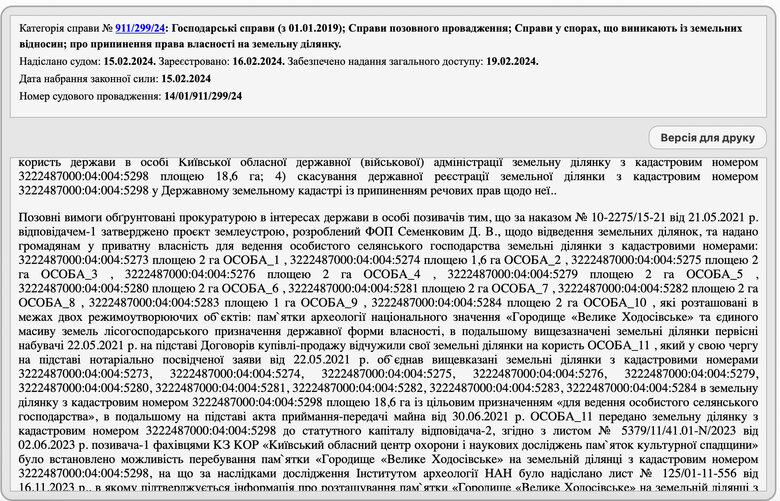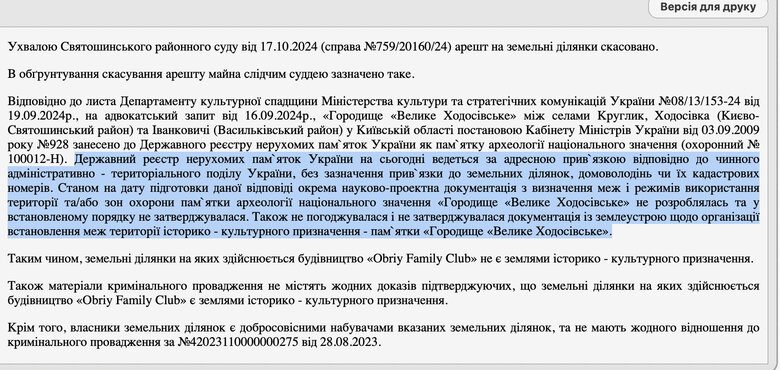High-rises in Kytaiv and cottages near Serpent’s Wall – how land carve-up was masked by "bona fide owners"
On Monday, April 7, President Volodymyr Zelenskyy signed Bill No. 12089, which restricts the ability to reclaim unlawfully alienated land. He signed it despite a petition urging him not to do so.
Interestingly, the petition from the business community urging the president to support the bill received only 13,000 signatures. This is despite the fact that civil society activists who supported the opposing petition repeatedly reported that people were unable to cast their votes. Nevertheless, their petition still managed to gather 25,000 signatures.
The main innovation of the bill — the one supported by business — is that if more than 10 years have passed since the unlawful alienation of land, the state or local communities will no longer be able to reclaim those plots, provided they are currently held by a bona fide acquirer.
This applies to forests, coastal zones, and other natural areas.
If the illegal actions took place less than 10 years ago, the state or the community must deposit funds in advance, and if they win the case, they must compensate the "bona fide" owner at market value. However, the law does not specify where prosecutors representing the state or the communities themselves are supposed to get the money for such compensation.
On the one hand, it’s hard to ignore the arguments of the business community, which is somewhat tired of constant bureaucratic shake-downs. On the other hand, it’s rather doubtful that businesses don’t realize they’re buying problematic assets.
This article focuses on several land plots that were clearly unlawfully alienated and fall under the scope of this new law. These are the cases that convinced the author that the bill introduced by People`s Deputy Frís, Yanchenko and Hunko, who was convicted in a NABU case and others, does more harm than good.
Story No. 1: How MacPaw bought a forest disguised as pastureland
Let’s start with the well-known MacPaw story. In the winter of 2023, the company’s owners, a well-known IT business, reported that law enforcement had conducted searches. It later turned out that the authorities were looking into the construction the company was carrying out on the banks of the Dnipro River.
MacPaw Property Management LLC acquired land that had previously belonged to the state enterprise Pereiaslav-Khmelnytskyi State Agroforestry. The company purchased the land from private individuals and is, on paper, considered a bona fide acquirer.
At the same time, it’s hard to imagine that a well-known company like this wouldn’t have at least one lawyer who knew that, under the Water and Land Codes of Ukraine, construction in protected coastal zones outside urban areas is only permitted for water-related infrastructure (such as dams and piers), as well as for sports and recreational facilities.
Initially, the land parcels were classified as "forest fund land," but by the time MacPaw acquired them, they had already been re-designated as land "for personal farming," "for subsidiary agriculture," "for individual gardening," and "for haymaking and livestock grazing."
The MacPaw land was originally allocated in 2013. Investigative actions began in 2018. Now, thanks to the law authored by Ihor Fris and other "bona fide" deputies, the scheme will become legal — because Kosovan’s company is considered a bona fide acquirer.
The bill’s author, Ihor Fris, described the value of his legislative proposal with the following example: "A simple case — you buy an apartment in a nine-story building, and seven years later someone shows up and says: ‘Friend, you’re not actually the owner of this apartment.’ Back in the 2000s, when that land parcel was privatized — it changed hands ten times, and nine years ago it was bought by the developer who built your apartment — it turns out the land was originally privatized illegally. So now, today, you’re told that the apartment is no longer yours, and we’re taking it away."
Let’s set aside the fact that, thanks to the bona fide acquirer status, no one will ever demolish the extra floors that exceed permitted building heights.
"Monster building" in Podil, where the permitted height is violated
Let’s look at another provision: Fris somehow considers it perfectly reasonable that, in order to take legal action against someone who grabbed a piece of Kyiv land through a scheme reminiscent of Komarnytskyi’s playbook, the state — that is, ordinary taxpayers — should foot the bill, even though they had absolutely nothing to do with these schemes. Fris also didn’t bother outlining how the legal compensation fund is supposed to be financed. That simply wasn’t part of the plan.
"This bill does not in any way improve the position of a bona fide acquirer. Not at all. In no way whatsoever. The legal position regarding the rights and status of bona fide acquirers has already been outlined by the Grand Chamber of the Supreme Court, as well as by the Supreme Court itself... One cannot pretend not to understand that they are acquiring property located on a riverbank or in a buffer zone. By default, such acquisitions are not subject to protection. Can the state or local governments, who have the same legal standing as any other owner, be discriminated against? And won’t the courts ultimately be guided by the Constitution, rather than by these amendments?" These were the remarks of Larysa Rohach, head of the Supreme Commercial Court, as quoted by LB.ua.
Before moving on to other examples that show what the law proposed by Fris, Batenko, Yanchenko, and Hunko will lead to, it’s important to explain what exactly they changed, apart from the time limits.
The key amendments concern Article 388 of the Civil Code, which defines what types of property can remain under state ownership.
According to Fris’s amendment, this provision no longer applies if the property, at the time it was removed from state or municipal ownership, belonged to one of the following categories:
a) critical infrastructure facilities;
b) state-owned assets of strategic importance to the economy and national security;
c) defence facilities or military lands;
d) to properties or territories within the nature reserve fund, provided there is documented confirmation of the status of such sites (territories) at the time it ceased to be under ownership;
e) to hydraulic engineering structures, provided that there is documented confirmation of their status at the time it ceased to be under ownership;
f) to cultural heritage monuments that were not subject to privatization.
Now let’s take a look at a few more cases that are now under threat because of the Fris bill.
Story 2. A Residential Complex on the Kytaiv Hillfort
For the past year, developer Ihor Nikonov has been complaining that those pesky activists are interfering with his plans to build a residential complex in Kytaiv.
Nikonov is seeking to build in the Kytaiv, Samburky, and Bolharske areas. However, it turns out that part of the land overlaps with an archaeological site — the Kytaiv Hillfort.
Five land plots totaling more than 70 hectares — two of which lie directly within the hillfort area — were transferred during the tenure of the late Mayor Oleksandr Omelchenko to the "Kyiv Vegetable Factory," which was reportedly linked to the interests of Viktor Pylypyshyn. Under Mayor Chernovetskyi, the land was reclassified from agricultural to residential use, despite the fact that back in 2001, the Kitaiv area had already been officially recognized as a national heritage site.
Ancient cities typically consisted of a hillfort, a burial site, and a settlement area (posad). It was the settlement area that first disappeared from official records and was initially designated for "gardening," then later reclassified for development.
Prosecutors and activists interviewed by Censor.NET are convinced that the heritage site had been deliberately prepared for construction over a period of years, including by intentionally reducing its size.
Prosecutors from the Office of the Prosecutor General are in court seeking to return these lands to state ownership. Activists are calling for the area to be incorporated into the Holosiivskyi Nature Reserve.
In 2024, KAN Development owner Ihor Nikonov made a public statement saying that, as a businessman, he cannot be held responsible for mistakes made by officials twenty years ago.
"If officials allocated the land illegally, then they should be held accountable. Why should a business suffer if it had nothing to do with it?" Nikonov told Censor.NET.
The situation borders on absurd, as the statute of limitations for cases such as that of former Kyiv City Council Secretary Oleh Dovhyi expired around 2018. Now he is actively promoting himself as a philanthropist wherever possible.
In the books of the late archaeologist Ivan Movchan, who studied the outskirts of ancient Kyiv, the Kytaiv settlement area is described in detail. According to his research, what remains there is not just a few shards of pottery, but lateral log-house walls standing 2.9 to 3.2 meters high, and even a double-layered wooden floor.
Nikonov offered to fund archaeological excavations and even proposed creating a museum within five years, but archaeologists declined.
The issue lies in the fact that, a few years ago, at the request of the land tenant, an archaeological center, where one of the key opponents of the construction, Ivan Zotsenko, was working at the time, prepared documentation defining the boundaries of the heritage site. However, the developer rejected the documentation, and it was never approved. Instead, alternative versions were drafted with reduced boundaries that, according to Censor.NET’s sources, did not correspond to the actual extent of the site.
Apparently, it will now be much easier for Nikonov to begin construction.
Story 3: A cottage settlement on the Serpent’s Wall
In the autumn of 2024, activists reported that near the village of Ivankovychi in Kyiv Oblast, the ancient Khodosivka hillfort — over 3,500 years old and designated as a national heritage site — was being destroyed.
Next to the northern section of the rampart, construction of a cottage settlement had begun. The site was fenced off, and a road was being laid alongside it — part of which involved cutting through the rampart itself.
Photo: facebook.com/kekz.ua
In December 2024, the then head of the Kyiv RSA (Regional State Administration) Ruslan Kravchenko appealed to the Prosecutor General's Office to stop the destruction of the settlement and ramparts.
It has been documented that within the protected area of the heritage site, houses built in previous years are located just 10–15 meters from the ramparts. According to the plans of unscrupulous developers, a cottage settlement is to be constructed here," the head of the RSA said in a statement.
However, even before Kravchenko’s appeal, prosecutors from the Prosecutor General’s Office had already filed a lawsuit regarding the illegal allocation of land near the Khodosivka hillfort.
The investigation found that on May 21, 2021, a land management project prepared by individual entrepreneur D.V. Semenkov was approved. Under this plan, ten land plots — each 2 hectares in size — were allocated to various individuals for "personal farming." The very next day, on May 22, 2021, these same plots were sold "under purchase agreements" to PERSON_11, who then consolidated the 18.6 hectares into a single land parcel and contributed it to the authorized capital of Emerald Land LLC.
Emerald Land LLC — the very company that now qualifies as a bona fide transferee — is currently initiating expert assessments to determine whether the boundaries of the heritage site overlap with its land parcels.
Prosecutors insist that the land plots fall within two legally protected areas: the national archaeological site "Great Khodosivka Hillfort" and the only tract of state-owned forestry land designated for timber management.
However, there is every chance that, by the time the expert review is complete, some paperwork will conveniently disappear — and then the Fris amendment quoted above will come into play. In that case, the site of the ancient hillfort may be replaced by something like an "Obriy Family Club" — a name already associated with a National Police investigation into illegal land alienation.
The court ruling in this case contains a particularly "noteworthy" paragraph regarding the boundaries of the Khodosivske hillfort. According to the response from the Ministry of Culture: "The State Register of Immovable Monuments of Ukraine is currently maintained based on address references in accordance with the current administrative-territorial division of Ukraine, without specifying land plot boundaries, property ownership details, or cadastral numbers. As of the date of preparation of this response, no separate scientific and design documentation defining the boundaries and use regulations of the territory and/or protection zones of the national archaeological monument ‘Great Khodosivske Hillfort’ has been developed or officially approved."
But let’s not forget that the "bona fide owners" are entitled to their little cottages.
Story 4. "Horse Breeding of Ukraine"
And finally, let me recall the case of the land carve-up at the state enterprise Horse Breeding of Ukraine.
The enterprise was created in 2010 after the Azarov government reorganized the horse breeding sector. The plan was to develop the industry, but in the end, it was only the land carve-up that got developed. The enterprise holds a total of 40,000 hectares of land. Enough to let themselves go. Back in 2016, former head of the enterprise Denys Ptushko became the subject of several criminal cases.
However, the state enterprise established in 2010 never registered its land plots. Instead, following the land reform of 2021, the Onufriivka village council in Kirovohrad region registered communal ownership of the enterprise’s land and subsequently transferred it into private ownership to individuals.
Prosecutors are now suing these land transfers in court and have already recovered 18 hectares. But if you take a look at the court rulings in this case, there’s an interesting detail regarding the value of the matter in dispute.
To justify the amount of the claim, the prosecutor refers to data from the State Land Cadastre, which states that the normative monetary valuation of the disputed land plots — with a total area of 4,538.7363 hectares — is ₴113,929,218.47.
According to amendments to the Civil Code introduced by People`s Deputy Fris, Yanchenko, and Hunko, who was convicted in a NABU case, this amount must now be deposited either by the local community or by the prosecutor’s office.
One might ask: where is a country at war supposed to find this kind of money?
There’s also another rhetorical question-suspicion: what did the authors receive in return for their bill? But of course, that would be a vile and baseless accusation.
It’s just that Bihus.Info recently uncovered hotels and restaurants in Bukovel linked to Fris, apartments registered under his mother’s name, a winery that formally belongs to a friend, and a land plot for an eco-park where a restaurant is being built.
But of course, all of this is purely coincidental.
Tetiana Nikolaienko, Censor. NET

